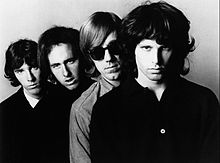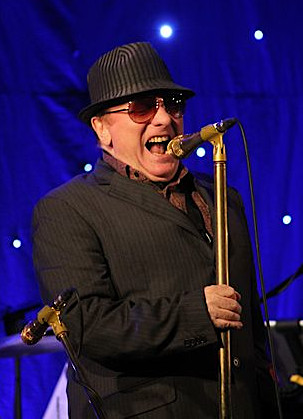
Sir George Ivan MorrisonOBE is a Northern Irish singer-songwriter and musician whose recording career started in the 1960s.

Astral Weeks is the second studio album by Northern Irish singer-songwriter Van Morrison. It was recorded at Century Sound Studios in New York during September and October 1968, and released in November of the same year by Warner Bros. Records.
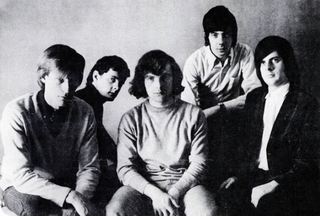
Them were a Northern Irish rock band formed in Belfast, Northern Ireland, in April 1964, most prominently known for their 1964 garage rock standard "Gloria" and launching Van Morrison's musical career. The original five-member band consisted of Morrison, Alan Henderson, Ronnie Milling, Billy Harrison, and Eric Wrixon.

"Mr. Tambourine Man" is a song written by Bob Dylan, released as the first track of the acoustic side of his March 1965 album Bringing It All Back Home. The song's popularity led to Dylan recording it live many times, and it has been included in multiple compilation albums. It has been translated into other languages and has been used or referenced in television shows, films, and books.
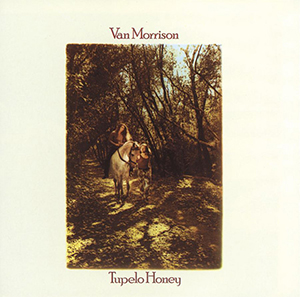
Tupelo Honey is the fifth studio album by Northern Irish singer-songwriter Van Morrison. It was released in October 1971 by Warner Bros. Records. Morrison had written all of the songs in Woodstock, New York, before his move to Marin County, California, except for "You're My Woman", which he wrote during the recording sessions. Recording began at the beginning of the second quarter of 1971 at Wally Heider Studios in San Francisco. Morrison moved to the Columbia Studios in May 1971 to complete the album.
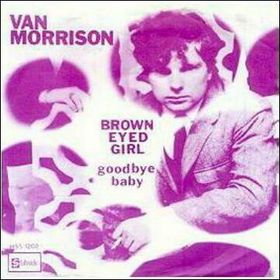
"Brown Eyed Girl" is a song by Northern Irish singer and songwriter Van Morrison. Written by Morrison and recorded in March 1967, it was released as a single in June of the same year on the Bang label, peaking at No. 10 on the Billboard Hot 100. The song spent a total of sixteen weeks on the chart. It featured the Sweet Inspirations singing back-up vocals and is considered to be Van Morrison's signature song.

Veedon Fleece is the eighth studio album by Northern Irish singer-songwriter Van Morrison, released in October 1974. Morrison recorded the album shortly after his divorce from wife Janet (Planet) Rigsbee. With his broken marriage in the past, Morrison visited Ireland on holiday for new inspiration, arriving on 20 October 1973. While there he wrote, in less than three weeks, the songs included on the album.

His Band and the Street Choir is the fourth studio album by Northern Irish singer-songwriter Van Morrison. It was released in November 1970 by Warner Bros. Records. Originally titled Virgo's Fool, Street Choir was renamed by Warner Bros. without Morrison's consent. Recording began in early 1970 with a demo session in a small church in Woodstock, New York. Morrison booked the A&R Studios on 46th Street in New York City in the second quarter of 1970 to produce two sessions of songs that were released on His Band and the Street Choir.
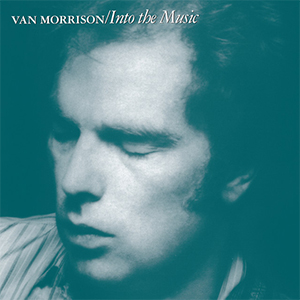
Into the Music is the 11th studio album by Northern Irish singer-songwriter Van Morrison, and was released in August 1979. It includes "Bright Side of the Road", which peaked at number 63 on the UK Singles Chart, and other songs in which Morrison sought to return to his more profound and transcendent style after the pop-oriented Wavelength. The record received favourable reviews from several music critics and was named as one of the year's best albums in the Pazz & Jop critics' poll.

Beautiful Vision is the thirteenth studio album by Northern Irish singer-songwriter Van Morrison, released in February 1982. It continued Morrison's departure from R&B at the time, instead favoring Celtic folk and American jazz in its music. As with many of Morrison's recordings, spirituality is a major theme and some of the songs are based on the teachings of Alice Bailey. Other songs show Morrison's Celtic heritage and reminiscence of his Belfast background.

The Philosopher's Stone is a compilation album by Northern Irish singer-songwriter Van Morrison released in 1998.

"Here Comes the Night" is a 1964 song, written by Bert Berns. It became a hit for Northern Irish band Them, fronted by Van Morrison, in March 1965, charting at No. 2 in the UK and No. 24 in the US. Them's single is listed at either No. 33 or No. 36 in the Top 100 best-selling UK singles during the calendar year 1965, depending on source.
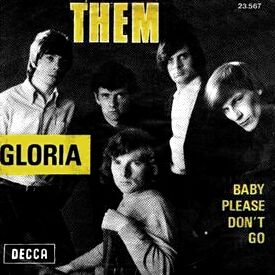
"Gloria" is a rock song written by Northern Irish singer-songwriter Van Morrison, and originally recorded by Morrison's band Them in 1964. It was released as the B-side of "Baby, Please Don't Go". The song became a garage rock staple and a part of many rock bands' repertoires.

Them Again is the second album by the Northern Irish band Them, fronted by lead singer and songwriter Van Morrison. The album was released by Decca Records in the UK on 21 January 1966, but it failed to chart. In the U.S., the album was released with somewhat different tracks in April 1966 and it peaked at number 138 on the Billboard chart.

"Domino" is a hit song written by Northern Irish singer-songwriter Van Morrison. It is the opening track of his fourth studio album, His Band and the Street Choir. This song is Morrison's personal musical tribute to New Orleans R&B singer and pianist Fats Domino.

"Cleaning Windows" is a song written by the Northern Irish singer-songwriter Van Morrison, recorded on his 1982 album Beautiful Vision.
"Almost Independence Day" is the closing song on Northern Irish singer-songwriter Van Morrison's 1972 album Saint Dominic's Preview. The song is ten minutes long and features Morrison trading guitar licks with Ron Elliott.

Live at Montreux 1980/1974 is the first official DVD by Northern Irish singer-songwriter Van Morrison. It was released on 16 October 2006. The films consist of two separate performances by Van Morrison at the Montreux Jazz Festival in Switzerland. It was certified gold in May 2007 and platinum in June 2009.
Thomas Kilpatrick, known as Tommy Scott, is a Scottish songwriter, producer and singer. As a songwriter and producer in the 1960s and 1970s he had numerous hits in pop, rock, and folk styles; including records with Them, The Dubliners, Sydney Devine, Twinkle, and Lena Zavaroni. From the 1980s onwards, he has sung and recorded traditional Scottish music.

"Ro Ro Rosey" is a song written by Van Morrison that was written and recorded for Bang Records owner and producer Bert Berns and released on his 1967 album Blowin' Your Mind!. It was also released as the follow-up single to "Brown Eyed Girl."

